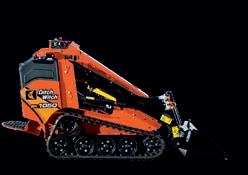A PUBLICATION OF THE OHIO LANDSCAPE ASSOCIATION


The Entry Deadline for the Landscape Ohio! Awards is here. Submit your projects by December 13th, 2024.





















Greg Botson Certified Insurance Counselor



The Entry Deadline for the Landscape Ohio! Awards is here. Submit your projects by December 13th, 2024.





















Greg Botson Certified Insurance Counselor
As the seasons shift, many landscaping companies encounter challenging conditions that lead to downtime for their crews. Rather than allowing these days to go unproductive, employers should choose to reinvest in their teams through training and continuing education.
Continuing education in our field is a crucial element in keeping professionals informed about the latest techniques, trends, and best practices. It not only enhances skills but also promotes sustainable practices and ensures compliance with industry regulations. This commitment to learning ultimately leads to improved service quality, increased customer satisfaction and increased personal self-worth. In short, continuous education empowers landscapers to adapt to market demands and innovate in their work, contributing to a more skilled and knowledgeable workforce.
The OLA is committed to helping shape the future of our industry by providing a wide array of educational events for both members and non-members. For example, over the next two months alone the OLA will host a rock-facing clinic, dormant pruning sessions and two sales clinics. Additionally, when you take into account our free evening meetings and networking opportunities, there is literally something for everyone. Much of this is made possible through OLA’s collaborations with its members, who often donate their time, space and/or resources to help enrich the educational experience.
In addition to OLA’s offerings, there are external opportunities for continuous education, as well. For instance, skill-specific programs like the Landscape Design Certificate through Cuyahoga Community College can further elevate your team’s expertise. Additionally, thanks to advancements in technology, national associations like ICPI and NALP now

Cleary Brothers Landscaping
provide certifications through online portals, making it easier for individuals to pursue education without incurring significant travel costs.
Investing in continuous education benefits not just individual employees but also the organizations they work for. Companies that prioritize employee development often experience higher levels of engagement and satisfaction among their teams. When employees feel that their employer is committed to their growth, they are more likely to be dedicated to their roles and the organization.
Furthermore, ongoing education can reduce turnover rates. Employees are less inclined to seek opportunities elsewhere if they believe their current employer is providing valuable development prospects.
One of the most significant benefits of continuous education is its potential for career advancement. Professionals who invest in their education often find more opportunities for promotions, raises, and new job offers. Employers value employees who take the initiative to enhance their skills and knowledge.
Certifications and advanced training can distinguish candidates in a competitive job market. For instance, a landscaping professional with a certification in landscape design or pest management is more likely to stand out to potential employers, positioning themselves as an expert in their field.
continued on page 6

COVER: Landscape Ohio! Awards merit award winner in the category of Garden Structures & Pavements, submitted by Landscapes By Terra.
3 8 12 16 20 24 30 31 31
PRESIDENT’S COLUMN
The Benefits of Continuing Education in Landscaping
PERENNIAL FOCUS
Perennials with Multiple Seasons of Interest
FISCAL FITNESS
Investing Keys
FOR SAFETY SAKE
Pole Saw Safety Tips
PLANT OF THE MONTH
Viburnum lentago: Nannyberry
FEATURE ARTICLE
First Click to Proposal: Building Trust and Establishing Rapport as a Lawn, Landscape, and Outdoor Living Business
DIRECTIONS
WELCOME NEW MEMBERS
ADVERTISING INDEX
OHIO’S PROFESSIONAL GREEN INDUSTRY ASSOCIATION
OHIO LANDSCAPE ASSOCIATION
9240 Broadview Road
Broadview Heights, Ohio 44147
Phone: 440.717.0002
Toll Free: 1.800.335.6521
Web: www.ohiolandscapers.org and www.myohiolandscape.com
DESIGNER / EDITOR
Rick Doll
REGULAR WRITERS
Michael J. Donnellan, M3 Wealth Management
Dr. Jim Funai, PhD., Cuyahoga Community College
Shelley Funai, Stan Hywet Hall and Gardens
Cameron Maneri, Cleary Brothers Landscaping
Sandy Munley, Ohio Landscape Association
Bobbie Schwartz, FAPLD, Bobbie’s Green Thumb
ADVERTISING INFORMATION
Submission deadline: 10th of the month, prior to the month of magazine publication. For advertising rates and ad specs, please call 440.717.0002, or email Rick Doll Jr. at rick@ohiolandscapers.org.
DISCLAIMER
The Ohio Landscape Association, its board of directors, staff and the editor of The Growing Concern neither endorse any product(s) or attests to the validity of any statements made about products mentioned in this, past or subsequent issues of this publication. Similarly, the opinions expressed in The Growing Concern are those of the authors and do not necessarily represent the views of the Ohio Landscape Association.
OFFICERS
President Cameron Maneri
President – Elect
Ryan Drake
Treasurer
Brandon Barker
Immediate Past President
Stephanie Gray, LIC
DIRECTORS
Amy Gatoo
Philip Germann
Matt Malone
Tim McCaskey


OLA STAFF
Executive Director
Sandy Munley
Associate Director
Rick Doll
Membership Coordinator
Melissa Roberts









Bob Ramser, LIC
Tom Rieder, LIC





UPCOMING OLA MEETINGS, EDUCATION SEMINARS & EVENTS
NOVEMBER 7
STONE CLINIC:
RIGHT TOOL, RIGHT TECHNIQUE
Rock facing is a hand-crafted technique that involves chiseling the top and bottom of a stone face to create a textured, 3D look. It can be used on a variety of projects, such as: mantels, pool coping, wall caps, steps and more. Rock facing is best for finishing the edges of sandstone, granite, and limestone. If you or your staff struggle to rockface 2, 2.5 & 3 inch sandstone, this is the prefect clinic for you. Instructed by Master Stone Mason, Chris Pascoe. Held at Van Ness Stone, Inc. (SOLD OUT)
NOVEMBER 20
OLA ANNUAL MEETING
Succession & Transition Planning
Stepping away from a business you’ve built isn’t a matter of if, but when. Join various industry experts as we discuss the topic of Succession and Transition Planning in addition to the OLA’s Annual Meeting. Held at St. Michael’s Woodside Event Center. See page 25.
NOVEMBER 13 (N.E. Ohio)
SANDLER SALES TRAINING CLINIC
Professionals in our industry face a unique set of challenges when it comes to engaging and converting modern buyers. To address these challenges and help you thrive in today’s market, Sandler Training will be leading an insightful, highly interactive sales talk tailored exclusively for the OLA. See page 7.
DECEMBER 3 (Central Ohio)
SANDLER SALES TRAINING CLINIC
Our industry faces a unique set of challenges when it comes to engaging and converting modern buyers. To address this and help you thrive in today’s market, Sandler Training will be leading an insightful, interactive sales talk tailored exclusively for the OLA. See page 7.
5
DORMANT PRUNING
Our Dormant Pruning clinic is a halfday, hands-on clinic and a timely training opportunity for your crews to learn proper pruning techniques. This year, we will be combining our NE Ohio and Central Ohio clinics into one event - held at Secrest Arboretum in Wooster, Ohio - so that we may take advantage of the vast amount of plant material available on site. See page 17.
13
28th ANNUAL LANDSCAPE OHIO! AWARDS DEADLINE
The entry deadline for this year’s award program is fast approaching. For more information on how to enter, including rules and entry forms, visit ohiolandscapers.org/awards-program. See information, right.
JANUARY 16, 2025
CENTRAL OHIO EVENING MEETING
Using Social Media in Your Business
Done the right way, social media marketing can help your business gain exposure and generate leads. Join the OLA as we welcome Caleb Auman, Hardscape Contractor, Educator (The Hardscape Academy), and host of the Kid Contractor Podcast at the Grange Audubon Center in Columbus. Ohio. Registration opens November 2024.
Because your company deserves the recognition.

Now is the time to begin preparing your entries for this year’s 28th Annual Landscape Ohio! Awards program!
This Annual Landscape competition was created by the Ohio Landscape Association to increase awareness of quality landscaping and how it improves our environment.
Our annual awards program recognizes designers, installers, and property owners and is the only green industry awards program in Ohio to successfully promote award winners and the industry to the public, through a unique partnership with Ohio Magazine and Cleveland Magazine. All award winning projects are featured in the fall/winter issue of Landscape Ohio! Magazine, a unique insert placed in the September issue of Cleveland Magazine, a publication reaching over 282,000 readers.
Additionally, award winning projects are recognized at our annual awards gala, placed online for consumers to review, and may potentially be used for the cover of The Growing Concern.
This year’s deadline to enter is December 13, 2024, at which time all entries MUST be received at the OLA office.
For full details and tips on how to enter, please visit www.ohiolandscapers.org/ awards-program or call 440.717.0002.

continued from page 3
Continuing education also encourages more creativity and innovation. This is especially vital in a creative field like landscaping, where fresh concepts can differentiate a business from its competitors. Employees who are encouraged to pursue education often bring new perspectives and ideas back to their organizations, driving progress and growth.
As global awareness of environmental issues increases, many industries are prioritizing sustainability. Continuing education plays a key role in helping professionals understand and implement sustainable practices. In landscaping, training in eco-friendly design and maintenance techniques not only benefits the environment but also appeals to a growing number of environmentally conscious consumers.
Educating employees about sustainability can also enhance a company’s reputation. Businesses that demonstrate a commitment to sustainable practices through training and development are more likely to attract customers who value environmental responsibility.
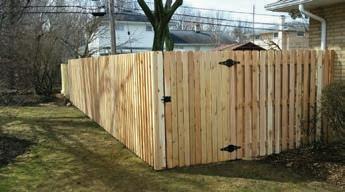
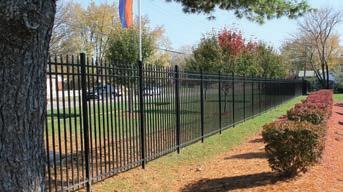
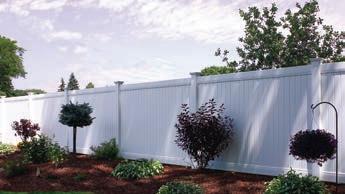
Investing in continuous education is not just an option; it’s a necessity in today’s fast-paced world. For professionals across various sectors, ongoing learning enhances skills, fosters innovation, promotes sustainability, and opens doors to new career opportunities. Organizations that prioritize continuous education enjoy higher employee engagement and retention, cultivating a knowledgeable and skilled workforce.
As the landscape of work continues to evolve, embracing a culture of continuous education will be key to thriving in an increasingly competitive marketplace. Whether through formal training programs, online courses, or industry workshops, the commitment to lifelong learning will pave the way for success in both individual careers and the broader landscaping industry. Let’s seize this opportunity to learn, grow, and adapt together!



EVENT INFORMATION
DATE & LOCATION
NE OHIO
NOVEMBER 13, 2024 MP SOLUTIONS
TRAINING FACILITY
6060 ROCKSIDE WOODS BLVD., SUITE 105
INDEPENDENCE, OH 44131
CENTRAL OHIO
DECEMBER 3, 2024
WOLF CREEK COMPANY
6700B HUNTLEY RD, COLUMBUS, OH 43229
AGENDA REGISTRATION
8:30 AM TO 9:00 AM CLINIC
9:00 AM TO 12:00 PM
COST TO ATTEND MEMBERS: $209 NON MEMBERS: $259
REGISTER TO ATTEND BY NOVEMBER 6 (NE OH)
NOVEMBER 26 (CENTRAL OH)
Rob Yoho / Sandler Training powered by MP Solutions Inc.
Professionals in the Green Industry face a unique set of challenges when it comes to engaging and converting the modern buyer. To address these challenges and help you thrive in today’s competitive market, join the OLA for an insightful, highly interactive sales talk tailored exclusively for the Ohio Landscapers Association.
In this dynamic and informative session, Rob Yoho with Sandler will discuss strategies, techniques, and mindset shifts essential to winning over the modern buyer. Rob will explore and equip you with practical insights that are executable, repeatable and will boost your sales performance.
In this session Rob will cover the psychological and behavioral traits of today’s consumers. You will learn the how to:
• Building Trust and Authenticity: In an age of information overload, authenticity and trust are critical. Learn how to build and maintain trust with your customers and establish a strong, lasting reputation.
• Personalize and Focus on the Customer: The modern buyer expects personalized experiences. Understand the importance of tailoring your offerings and services to meet individual customer needs and preferences.
• Overcome Objections & Assumptions: Equip yourself with strategies to address common objections and concerns that modern buyers may raise, ensuring a smoother sales process.
• Communicate Effectively: Hone your communication skills to connect with your prospects and clients on a deeper level. Learn the art of active listening and effective storytelling to create memorable experiences.
• Measure Success: Explore key performance indicators (KPIs) and analytics to gauge the effectiveness of your sales efforts and make data-driven decisions.
ABOUT THE PRESENTER
For 19 years Rob has been driven by the passion he has to grow people and organizations. Rob has worked with hundreds of companies and is a sought after speaker on sales, sales management, social media, strategy and goal setting.
In 2010 Rob was voted one of Cleveland’s Inside Business’s Top 25 under 35 and has worked with the Make-A-Wish Foundation and the Alzheimer’s Association of Greater Cleveland. Rob is an avid runner, golfer, & hobby farmer who lives in Lagrange, OH with his wife Amy and their three children Zander, Lyla, and Flynn.



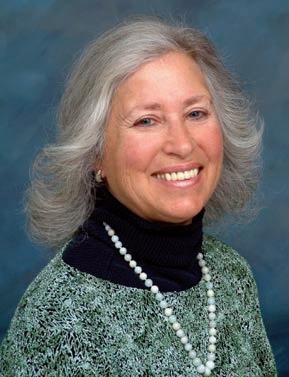
BOBBIE SCHWARTZ, FAPLD
Bobbie’s Green Thumb
When you are a gardener or a landscape designer, every square inch of bed is precious. Therefore, when you can, finding perennials with multiple seasons of interest is invaluable.
Echinacea purpurea (Coneflower) is high on my list. It blooms prolifically from July to September and then, if deadheaded, will rebloom into October and sometimes even into November. The later deadheads I leave up for late fall and winter for the birds and as a reminder that the garden is not dead, merely dormant. Seeds not eaten by the birds will seed into the garden. There are now a plethora of cultivars and colors from which to choose. I highly recommend not selecting echinaceas with double and triple blooms. They are useless to pollinators because the extra petals block nectar and pollen. A bonus is that deer rarely bother Echinacea.
When Iris sibirica (Siberian Iris) foliate in the spring, their narrow, upright leaves are quite distinctive. Then, when they bloom in late May and early June, they are a highlight of the garden. Usually shades of purple, blue and white, there are some harder to find “pink” cultivars as well. I put pink in quotation marks because those cultivars are really shades of lavender and mauve. The seedpods contribute to another season of interest during the summer. Although I tend to leave most pods and deadheads up for the winter, I have found that it’s better to leave only half of the Iris seedpods. This will assure that the plant’s energy will go into flowers instead of seeds for the following year. When temperatures drop in the fall, the green foliage turns bronze and remains that way during the winter. That bronzy color catches the eye because most perennial foliage, if not deciduous, is beige during the winter.
continued on page 10


continued from page 8
Happily, the deer never touch Iris of any species.
There are an infinite number of Sedum species but the one most used in gardens is Sedum spectabile and its cultivars. I have several in the garden but one I have enjoyed the most is ‘Amazingly.’ The deer mostly ignore it, although they do eat some of the other cultivars. In mid-March to early April, once the old stalks are cut down, it is easy to see the lovely succulent rosettes that signal the arrival of spring. During the summer, the flowering stalks arise, resembling pale green broccoli. In early September, they evolve into pale pink and then deepen to rosy pink. When winter arrives, the flat tops of the deadheads serve as a landing spot for birds and insects. When covered with snow, they look like sculptures.
Do consider these perennials next time you need a plant with more than one season of interest.
Bobbie Schwartz, FAPLD, owner of Bobbie’s Green Thumb in Shaker Hts., Ohio, is a landscape designer, consultant, freelance writer, and lecturer whose specialties are perennial gardens and four season landscapes. In addition to being an Ohio Landscape Association (OLA) member, she is an active member of the Ohio Nursery and Landscape Association (ONLA) and Perennial Plant Association (PPA). Bobbie is a Past President of the Association of Professional Landscape Designers (APLD).
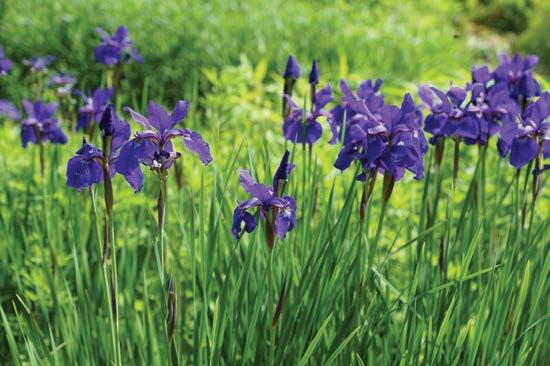





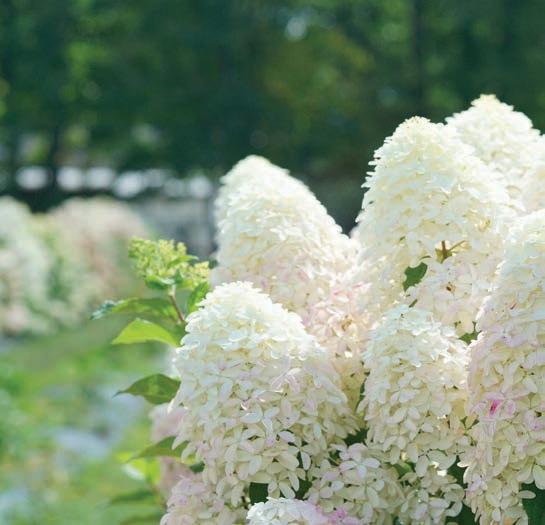







MICHAEL J. DONNELLAN M3 Wealth Management
A successful investor maximizes gain and minimizes loss. Though there can be no guarantee that any investment strategy will be successful, and all investing involves risk, including the possible loss of principal, here are some basic principles that may help you invest more successfully.
It’s the “rolling snowball” effect. Put simply, compounding pays you earnings on your reinvested earnings. The longer you leave your money at work for you, the more exciting the numbers get. For example, imagine an investment of $10,000 at an annual rate of return of 8 percent. In 20 years, assuming no withdrawals, your $10,000 investment would grow to $46,610. Then, over the next ten years, it would grow to $100,627.
While you should review your portfolio on a regular basis, the point is that money left alone in an investment offers the potential of a significant return over time. With time on your side, you don’t have to go for investment “home runs” in order to be successful.
Riding out market volatility sounds simple, doesn’t it? But what if you’ve invested $10,000 in the stock market and the price of the stock drops like a stone one day? On paper, you’ve lost a bundle, offsetting the value of compounding you’re trying to achieve. It’s tough to stand pat.
The longer you stay with a diversified portfolio of investments, the more likely you are to reduce your risk and improve your opportunities for gain. Take your time horizon into account when establishing your investment game plan. For assets you’ll use soon, you should consider investments designed to protect your principal. Conversely, think long-term for goals that are many years away.




continued from page 12
During any given period of market or economic turmoil, some asset categories and some individual investments historically have been less volatile than others. Bond price swings, for example, have generally been less dramatic than stock prices. Which takes us to the next key: diversification…
Asset allocation is the process by which you spread your dollars over several categories of investments, usually referred to as asset classes. The three most common asset classes are stocks, bonds, and cash or cash alternatives such as money market funds.
There are two main reasons why asset allocation is important. First, the mix of asset classes you own is a large factor in determining your overall investment portfolio performance. In other words, the basic decision about how to divide your money between stocks, bonds, and cash can be more important than your subsequent choice of specific investments.
Second, by dividing your investment dollars among asset classes that do not respond to the same market forces in the same way at the same time, you can help minimize the effects of market volatility while maximizing your chances of return in the long term. Ideally, if your investments in one class are performing poorly, assets in another class may be doing better. In choosing an asset allocation, you’ll need to consider how quickly you might need to convert an investment into cash without loss of principal (your initial investment). Generally speaking, the sooner you’ll need your money, the wiser it is to keep it in investments whose prices remain relatively stable. You want to avoid a situation, for example, where you need to use money quickly that is tied up in an investment whose price is currently down.
Dollar cost averaging is a method of accumulating shares of an investment by purchasing a fixed dollar amount at regularly scheduled intervals over an extended time. When the price is high, your fixed-dollar investment buys less; when prices are low, the same dollar investment will buy more shares. A regular,
fixed-dollar investment should result in a lower average price per share than you would get buying a fixed number of shares at each investment interval.
Your portfolio’s long-term success will depend on periodically reviewing it. Maybe economic conditions have changed the prospects for a particular investment or an entire asset class. Also, your circumstances change over time, and your asset allocation will need to reflect those changes. For example, as you get closer to retirement, you might decide to increase your allocation to less volatile investments, or those that can provide a steady stream of income.
Another reason for periodic portfolio review: your various investments will likely appreciate at different rates, which will alter your asset allocation without any action on your part. For example, if you initially decided on an 80 percent to 20 percent mix of stock investments to bond investments, you might find that after several years the total value of your portfolio has become divided 88 percent to 12 percent. You need to review your portfolio periodically to see if you need to return to your original allocation.
Scenarios illustrated are hypothetical in nature, results may vary. Investing is subject to risk which may involve loss of principal. Past performance is not indicative of future results.
The M3 Wealth Management Office does not provide legal or tax advice. Consult an attorney or tax professional regarding your specific situation. The information herein is general and educational in nature and should not be considered legal or tax advice.
Michael J. Donnellan specializes in stock selection and retirement planning. Feel free to contact him with any questions or comments at the M3 Wealth Management office at 17601 W. 130th Street – Suite 1 in North Royalton, Ohio. Phone number (440) 652-6370
Email: donnellan@m3wealthmanagement.com
Securities and advisory services offered through L.M. Kohn & Company
Registered Broker/Dealer Member FINRA/SIPC/MSRB 10151 Carver Rd. Suite 100 – Cincinnati, Ohio 45242 (800) 478-0788
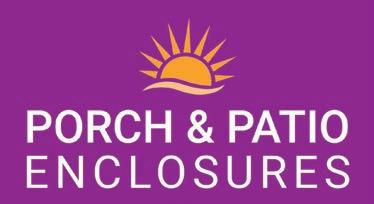





Extended-reach pole pruners can help lawn maintenance crews reach new heights with respect to tree-trimming versatility and productivity. If used carelessly and unsafely, though, your newfound tree-trimming fame can come crashing down on you.
Your odds of operating safely will naturally increase if you’re using an engine-powered pole saw that is comfortable to use. Power-to-weight and reach are important specs to evaluate.
The next step to safely operating a pole saw, or any piece of outdoor power equipment for that matter, is to make sure you have all of your PPE – personal protective equipment (safety apparel) in order. When operating a pole saw, you’ll need the following:
• Eye protection
• Hearing protection
• Helmet
• Non-slip work gloves
• Non-slip work shoes (steel-toed boots advised)
• Long pants (leg chaps also advised)
Additionally, you want to avoid wearing loose-fitting clothing and jewelry, as they can get tangled up in the brush you are
cutting or even the saw itself. On that note, also make sure that your shirt or jacket is buttoned up, sleeves included.
Once you have yourself in working order, it’s time to make sure your pole saw is. Inspect the chain for missing or heavily worn teeth. Make sure the chain is property oiled and that the automatic bar/chain oiling system is functioning. Look for wear or damage to the guide bar and sprocket. Finally, inspect the saw’s safety features to make sure they are in working order, which includes the throttle lever and throttle lockout switch.
Conditions. First off, think about whether or not the conditions are even right for trimming trees in the first place. If it’s really windy or wet and rainy, it might not be a good idea. Also look at what you are planning to trim. You must use extra precaution when working on trees with rotting trunks, loose bark and/or dead branches.
continued on page 18


EVENT INFORMATION
DATE & LOCATION
DECEMBER 5, 2024
SECREST ARBORETUM
WELCOME & EDUCATION CTR.
2122 WILLIAMS RD., WOOSTER, OH 44691
AGENDA
REGISTRATION / BREAKFAST
8:30AM - 9:00AM
CLINIC
9:00AM - 12:00PM
COST
MEMBERS
NON MEMBERS


The most important landscape maintenance practice is the control of plant size by the correct method of pruning to retain the natural branching characteristics of the plants and integrity of the landscape design. Dormant Pruning of Landscape Plants is a half-day, hands-on clinic and a timely training opportunity for you and your crews to get back to the basics and learn the proper way to prune in time for winter and early spring pruning. This year, we’re happy to announce that we will be holding our clinic at Secrest Arboretum, offering attendees the opportunity to hone their skills using a vast amount of plant material.
GENERAL INFORMATION: This seminar will include a lecture as well as hands-on training. Attendees will need to bring their own notepad and pen, hand pruning shears, a small pruning saw, and long handle lopping shears, and will need to dress appropriately for outdoor practical training.
INSTRUCTED BY
BENJAMIN STAYER / LOCAL MANAGER & ARBORIST REPRESENTATIVE BARTLETT TREE EXPERTS
Ben graduated from the University of Toledo in 2013 with a Bachelor’s degree in Environmental Studies. He started his arboriculture career in 2014 with Bartlett Tree Experts in State College, Pennsylvania. Ben has held positions as Arborist Climber, Crew Leader and Plant Health Care Specialist. He was also a Local Office Safety Coordinator prior to returning to Ohio and becoming Local Manager and Arborist Representative in 2023. An ISA certified arborist, Ben is also a certified pesticide applicator.

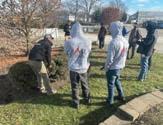

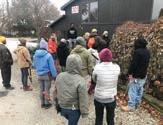


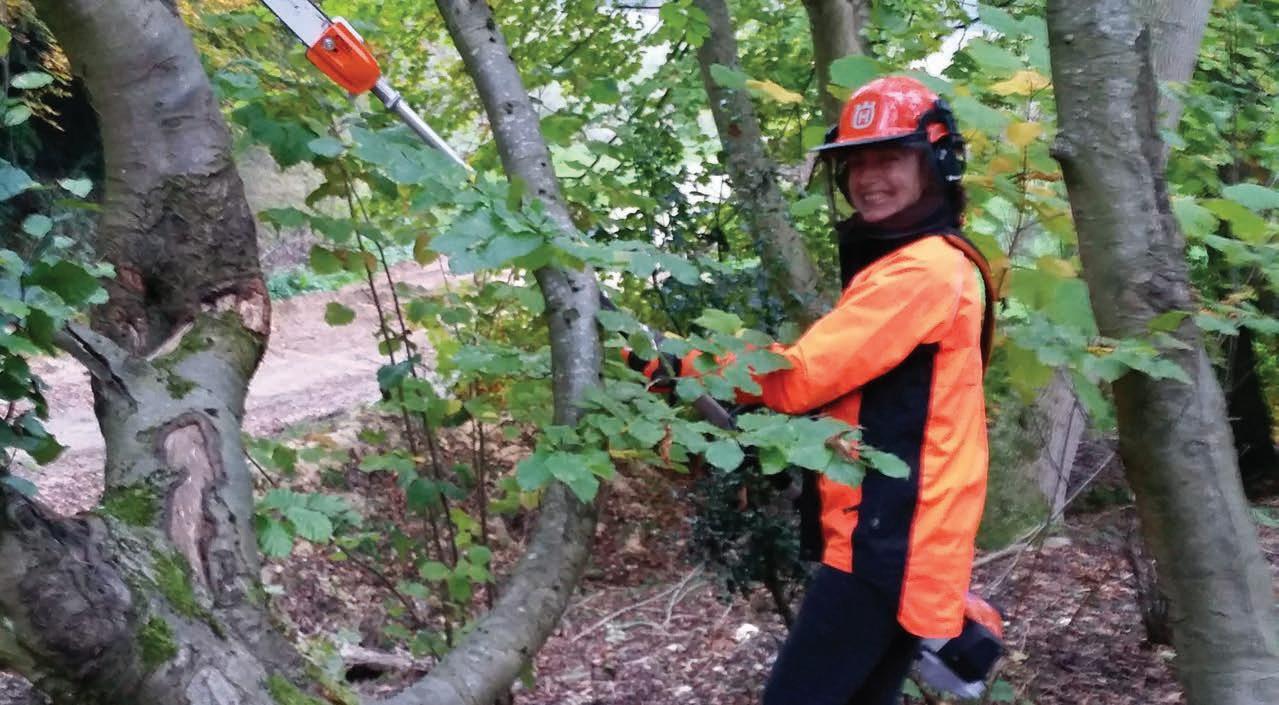
continued from page 16
Work area. Observe your work area. Does anything pose a fire threat? Is there anything that could be damaged by falling debris? Is there anything that could pose a trip or slip hazard for you? If so, address it before you start sawing.
Power lines represent a huge area of concern when trimming trees. Maintain a distance of at least 50 feet. The same goes for any electrical source. And the same goes for other people too. Make sure your crew mates and other bystanders steer clear of your work area by at least 50 feet.
Footing. Establish a firm, two-footed footing. Don’t stand on anything, which includes a ladder or tree. If you’re trimming a tree that’s on a hill or slight incline, stand on the high side. That way, if anything were to fall or begin rolling downhill, you won’t have to worry about having to dodge it.
Two hands. Just as you want to maintain a secure, two-footed footing, you want to maintain a secure, two-handed grip. First make sure the handles are dry so your hands won’t slip. Then, be sure to wrap those fingers and thumbs all the way around and squeeze it tight.
Technique. When starting a cut, you don’t want to already be in contact with the branch as your saw will likely jam. Consider starting at a lower throttle before making contact with the branch. Once you have a groove started, throttle up.
A 45° cutting angle is ideal. Go slow and steady, maintaining a secure two-handed grip. Really focus on that last half of the cut, preparing to throttle back and hang on as you complete the cut.
Never over-reach. You can hurt yourself simply as a result of over-extending. But you can also run into other issues as a result of executing a poor cut.
Sometimes jamming or kickback will occur. If your saw jams, shut the engine off and wait a few seconds for all moving parts to stop. Then you can unjam it. Kickback happens when the tip of the guide bar hits an object or when the chain is pinched during a cut. To help avoid kickback, just maintain that sturdy two-handed grip. Then, in tight situations, consider throttling back a bit.
When you are done using your engine-powered pole saw, shut the engine off. Keep the blade in front of you and the hot engine muffler away from your body when carrying the saw. When loading the saw back onto the trailer, make sure you attach the guide bar cover, sometimes referred to as a sheath or scabbard.
If anything seemed wrong with the saw, let your boss know right away when you get back to the shop. The last thing you want to do is head back out into the field with a pole saw that isn’t going to perform efficiently – and safely – the next day.
This article was written by STIHL and posted by Gregg Wartgow, editor in chief of Green Industry Pros magazine, SnowPRO, and the Dealer Success Guide, to the Green Industry Pros website, located at greenindustrypros.com. Green Industry Pros is the top source for landscape professionals looking for information on the latest products, trends and business strategies that will help them grow their companies.














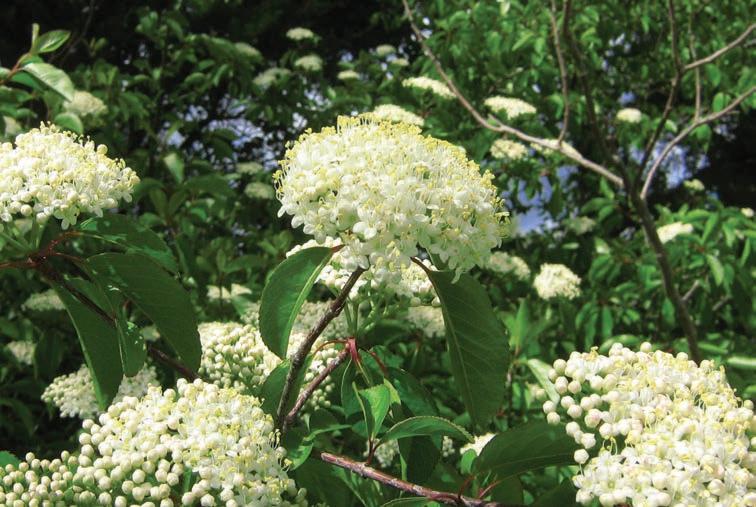
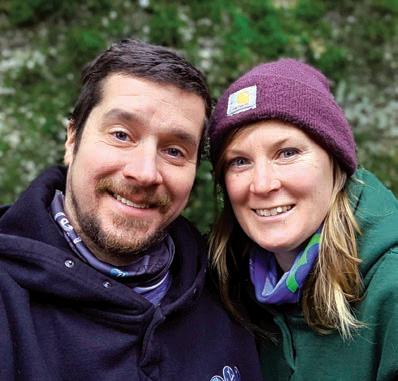
JIM FUNAI, PhD
Cuyahoga Community College
SHELLEY FUNAI, LIC
Stan Hywet Hall and Gardens
If you were to walk around the Funai Farm this time of year, you would certainly be greeted by many species and cultivars of one of our favorite shrub genera – the Viburnum. This greeting would come in the form of thousands of little fruits in oranges, yellows, reds, blues, and dark purples to black. All Viburnum species are flowering and fruiting, but what separates them (ornamentally) is the scent, color, size, and longevity of the fruit.
The Viburnum we want to share this month is one of many beautiful native members of the genus Viburnum lentago. With a range starting in the north by Hudson Bay and west to Manitoba, the species can be found south into Georgia and Mississippi. We’ve seen this species growing in large thickets around Dolly Sods Wilderness in West Virginia and marveled at their ability to form their own mini-forest.
This isn’t some overly dwarfed Viburnum being produced by today’s breeders. These “shrubs” will reach 15 to 20 feet tall in the landscape and can double that size in nature. The National Champion is over 50 feet tall, located just north of Detroit. These plants can easily be trained to grow as small,
single-stemmed ornamental trees, or left to their own, and you can expect a beautiful thicket of shrubbery.
With a very fibrous root system and the ability to form a colony, this plant is ideal for future (present) storm resiliency. The roots and suckering ability serve as a glue for soil during the wicked rainstorms we will continue to get as sea temperatures rise and the atmosphere holds more water. There is a large colony of these at the Biltmore Estate in Ashville, NC, which did an impressive job holding its ground during Hurricane Helene’s record rains back in September. Unfortunately, our landscape design process must pay increasing attention to storm resilience for our changing climate. continued on page 22

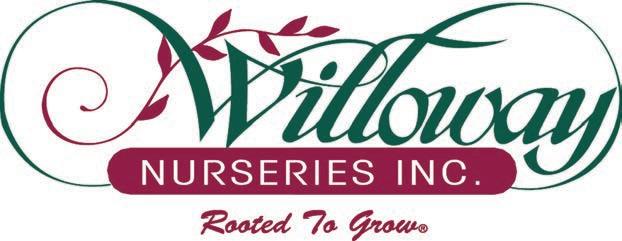
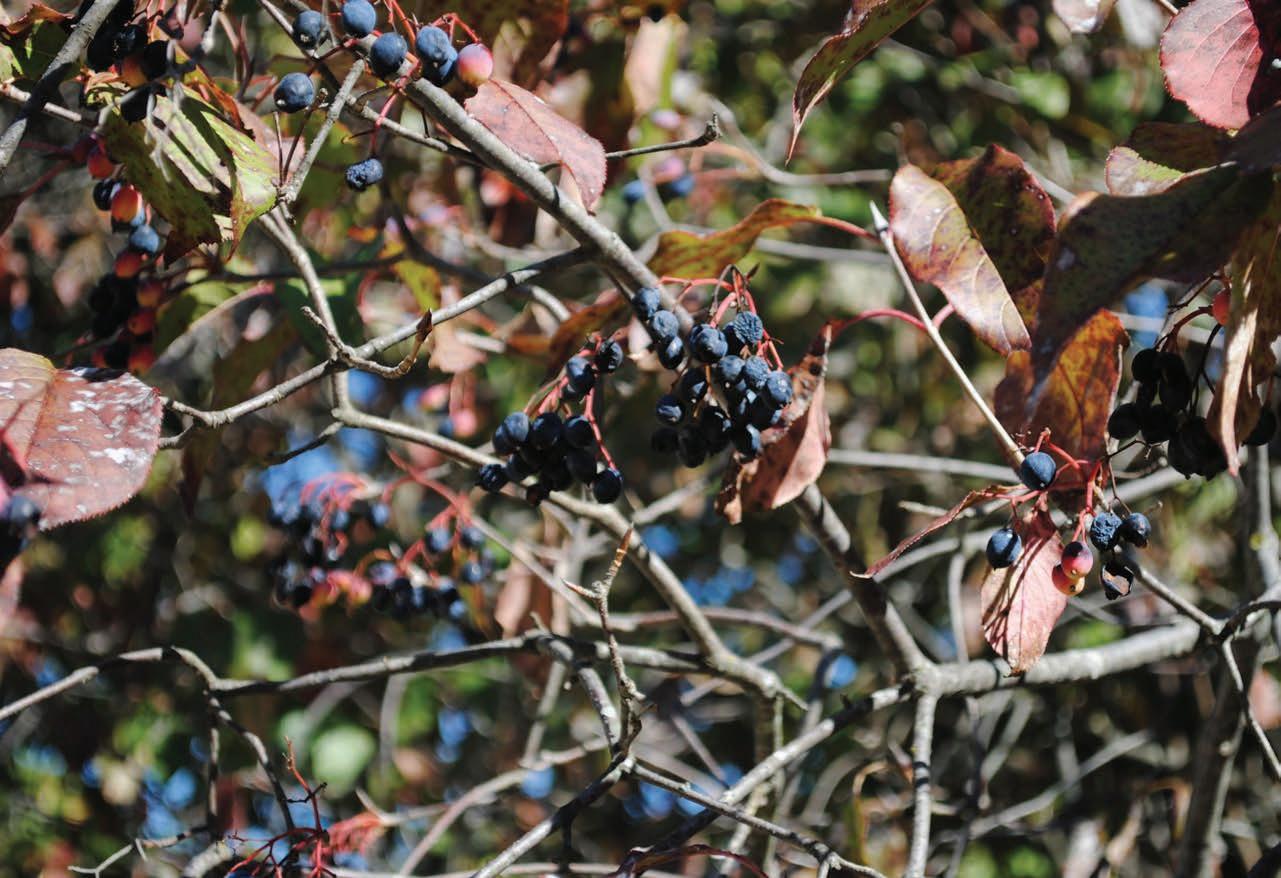
continued from page 20
The leaves are glossy, dark green and resemble those of wild black cherry (Prunus serotina), with similar sharply serrated margins. In fall, they will present yellows, reds, and purples on the same plant, making for a striking display far greater than that of Euonymus alatus (BORING Bush). Why have one color when you can have them all?!
The flowers are flat-topped cymes of bright-white flowers that appear creamy-yellow due to the many prominent stamens that shoot out of the flowers. Blooming in later May, about 4 inches across, they are showy but present little to no scent.
Like most Viburnum, cross-pollination between at least two separate plants is ideal for fruit set. In later September, you’ll start to notice these fruits as they turn from a yellowgreen to black with a blue bloom over them. As the fall color begins to set in, we think it closely resembles the beautiful fruit set of Tupelos (Nyssa sylvatica). This species holds fruits well into December most years, offering a food supply to overwintering bird populations.
The abundance of flowers serves pollinators in spring, and the leaves are a key host for a species of butterfly called spring Azures (Celastrina ladon). This shrub provides food for the
caterpillars that will later turn into the most beautiful little blue butterflies you have ever seen.
The common names have an interesting background that we can’t fully verify, but they are fun, nonetheless. Either Sheepberry or Nannyberry refers to sheep or goats eating the fruits. In goat talk, a billy is a male goat while a nanny is a female goat. Legend is that the females tend to eat the fruit of this plant more than the males, but who knows how true that really is? We also found several references that the common name Sheepberry comes from the scent of the fruit, which, of course, meant we needed to test this theory. It’s not the most amazing scent, but we’re not sure we’d go so far as to say it smells like a sheep farm.
We can attest that placing this large shrub nearly anywhere in the landscape will provide a beautiful backdrop to smaller plants in front. We have also seen this used as a large hedge to provide a more formalized border between two spaces.
In nature, you are likely to find these growing on the forest edges, near streams, and even up slopes in drier soils. It has a lot of forgiveness in location, but the best fall colors are going to present with increased levels of sun exposure.



Some cultivars are listed in the literature, but we cannot locate a source for any of them. In truth, with the direction of the nursery industry, this species may not be available anymore. It is a shame the green industry as a whole has focused less on biodiversity and more on small groups of species that apparently have proven something. Perhaps we all need to refocus on diversity in our plant selections and demand more from our suppliers, designers, and installers.
With a rapidly changing climate, increased pest pressures and extreme weather events increasing, we’ll need all the diversity we can get. Put down your Burning Bush and pick up something interesting today!




Jim Funai, PhD, is full-time faculty at Cuyahoga Community College, a NALP accredited associate of applied science in hoticulture degree program. He has a PhD in Landscape Engineering and Forestry and is a Licensed Arborist. Shelley Funai is Grounds Manager at Stan Hywett Hall and Gardens in Akron, Ohio, which offers a historic estate designed by Warren H. Manning and a beautiful manor house museum. She is Landscape Industry Certified in Ornamental Plant Care.





While the ultimate goal is for your target customer to accept your project proposal, it’s what happens between the first click and you handing them over your proposal that influences the outcome the most –even more than pricing. Nurturing trust, understanding, and rapport helps you build a relationship and create a connection that makes the customer want to work with your business over your competitor.
86% of consumers are willing to pay more for a great customer experience. As a landscape industry business targeting the affluent demographic, whether you provide exceptional customer service isn’t a question. Winning bids and growing your business means going the extra mile to build relationships and establish trust authentically, both digitally and in person, so accepting the proposal is easy.
In today’s digital world, your website serves as your sales team. It’s a hub for your digital marketing efforts and likely the first interaction a prospect will have with your business.
Leading landscape contractors know how critical having a professionally designed and strategic website is and consider it an investment.
To begin building a relationship with a prospect, you’ll need the opportunity to do so. The customer journey begins online, usually through a Google search that brings them to your website, meaning you need to make a great first impression on your site before you ever have a chance to establish trust and present a proposal.
continued on page 26


DATE & LOCATION
NOVEMBER 20, 2024
ST. MICHAEL’S WOODSIDE 5025 EAST MILL ROAD BROADVIEW HTS., OHIO 44147
AGENDA
REGISTRATION / NETWORKING FOOD / CASH BAR
6:00 PM TO 7:00 PM
PROGRAM
7:00 PM TO 8:45 PM
COST TO ATTEND MEMBERS: NO CHARGE NON MEMBERS: $50
REGISTER TO ATTEND BY NOVEMBER 13, 2024
SPONSORED BY EMERALD SPONSORS


GOLD SPONSORS

SILVER SPONSORS



BRONZE SPONSORS






Many start a business without considering what the end might look like. Whether that end comes unexpectedly, by the passage of time, or through careful planning, it’s important to always build your business with a potential successor in mind. Whether you transition to an employee, a family member, a sale, or even private equity, it’s crucial to the overall success of the business.
Join us on November 20th, 2024, for an open panel discussion with industry experts and your peers. We will explore key metrics, systems, and the organizational decisions every owner should consider. Not planning to sell yet? Even if it’s not currently on your mind, understanding these metrics is essential to business success and maximizing your investment when the time comes.
Topics of discussion will include:
• Preparing Your Business for Transition
• Understanding Business Valuation
• Key Financial Metrics
• Advising and Preparing Family or Employees for a Transition
• Engaging with Prospective Buyers
• Structuring the Transaction
• Maximizing Your Investment
• Understanding EBITDA (Earnings Before Interest, Taxes, Depreciation & Amortization)
• What Private Equity Looks For
SPEAKERS (PRESENTERS TO BE ADDED)
TODD PUGH / CEO AND FOUNDER ENVIROSCAPES (SOLD TO SCHILL)
At fourteen, owner Todd E. Pugh began mowing lawns to earn spending money and begin saving for college. After graduating from The Ohio State University, he incorporated his growing business and he renamed it Enviroscapes. Strong business values and ethics have enabled Enviroscapes to grow from its first $5.00 per week mowing client into a multi-million dollar landscape company that ranks in the top 2% of all landscape companies nationwide. Enviroscapes is known nationwide by its peers for award winning landscapes and being a trend setter in LEAN business practices.
DAN BARON / ATTORNEY AT BARON LAW
Dan A. Baron is an estate planning and business attorney practicing in the greater Cleveland area. He is a member of the Ohio Bar Association, West Shore Bar Association, and Cleveland Metro Bar Association. Dan’s passion for helping individuals and business owners plan for the future has stemmed from owning a landscape construction company for over 15 years. As an active member of the Green Industry, Dan has learned first-hand the importance of asset protection and succession planning. Dan also holds a five star rating on Avvo and has written articles of legal scholarship.
ED KOENIG / CO-OWNER, CEO & DESIGNER AT LIFESTYLE LANDSCAPING, INC.
Since 1982, Ed Koenig has been actively involved in all aspects of Green Industry business development including; budgeting, recruiting, production management, systems development, strategic planning, sales management, marketing management, and landscape design. Ed has spent nearly 35 years with Lifestyle Landscaping, Inc., located in North Ridgeville, Ohio, with an additional 10 years of experience at other Northeast Ohio landscape businesses.




continued from page 24
Nearly 85% of mobile internet users will leave a website if it doesn’t load within three seconds, demonstrating how essential it is to have a quickly-loading website. With nearly 60% of internet traffic coming from mobile devices, all businesses should have a mobile-responsive site.
Professional website design considers the user experience in every aspect. Having clear calls-to-action (CTAs) is essential. Top lawn, landscape, and outdoor living businesses have a strategically planned website with well-organized content, so the user does not have to think about what to do next, it’ll be intuitive.
As your prospect peruses your website, they’ll get to know who you are through your content. Professional writers are skilled at creating educational content without being overtly sales-focused to bring value to the reader. This approach helps establish you as an industry leader and build trust.
Nearly all consumers read online reviews before making a purchase, and almost half of consumers trust online reviews as much as they would a recommendation from a friend or family member. Sprinkling in customer reviews helps build essential social proof and trust.
Blog content and articles are an excellent method of creating content to build trust. Since content can be used repeatedly, you can share your website content on social media, marketing emails, and more. Your sales team will also find the content helpful in sharing with their prospects. It’s an investment that continues to build upon itself, especially when optimized.
While your content helps establish a connection with your prospects, SEO helps your prospects find the content and your business in the first place. For example, when they perform a Google search for “modern fire pit designs,” your business will be at the top of their search results if the content has effectively targeted the right keywords and your website incorporates local SEO practices. Having effective SEO will help you even have the opportunity to build a relationship that leads to a proposal.
To reach the target audience that will accept your proposal, you need to know exactly who your ideal audience is. If you want to attract customers who want to build $150,000 outdoor spaces, then your content (visual and written) needs to reflect that.
• Screened Topsoil (Stored in a hoop house on site.)
• Granite & Sandstone Boulders
From 8” to 12’+ priced per ton and per piece on request. 1’-2’ granite and 2’-3’ granite available, presorted, for immediate pick up.
• Mixed Boulders (Available for immediate pick up.)
• Washed Gravel, Concrete & Mason Sand.
• Crushed Gravel & Limestone products available.

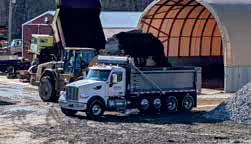

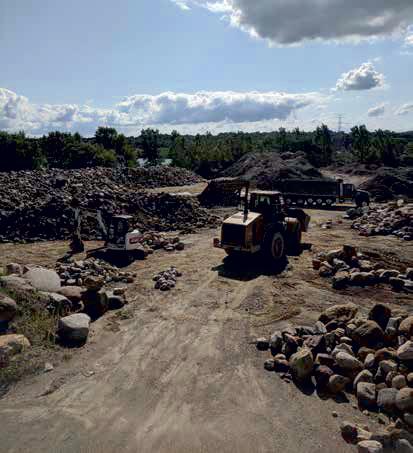
For example, businesses that prefer building complete outdoor living spaces with poolscapes, an outdoor kitchen, a lounge area, and an outdoor fireplace won’t want to showcase photos of a single walkway on their website. Such a photo gives the wrong impression about the type of work that these businesses perform.
• Prioritize workplace flexibility. Workers prefer jobs that provide more flexibility over those that offer more vacation days. To the extent possible, give workers a say in their schedule, work conditions, work organization, work location, and work tasks.
• Match tasks to abilities. Use self-paced work, selfdirected rest breaks, and less repetitive tasks.
Your website branding helps pre-qualify your prospects so that once they make the initial contact, you don’t have to do this yourself, resulting in less wasted time for both parties. When the potential customer submits a contact form on your site, you’re already set up for success.
responding via email, text, or a phone call, maintaining professionalism while addressing their questions can solidify the prospect’s confidence in your lawn, landscape, or outdoor living business.
• Provide health promotion and lifestyle interventions including physical activity, healthy meal options, tobacco cessation assistance, risk factor reduction and screenings, coaching, and onsite medical care. Accommodate medical self-care in the workplace and time away for health visits.
• Avoid prolonged, sedentary work. Prolonged, sedentary work is bad for workers at every age. Consider sit/stand workstations and walking workstations for workers who traditionally sit all day. Provide onsite physical activity opportunities or connections to low-cost community based options.
As your prospect progresses through the customer journey and makes the first contact, it’s important to respond promptly and courteously, setting the tone for your business relationship. Timely responses respect the prospect’s time and interest, while courteous communication demonstrates your commitment to exceptional customer service.
• Manage hazards. Including noise, slip/trip hazards, and physical hazards – conditions that can challenge an aging workforce more.
• Provide and design ergo-friendly work environments. Workstations, tools, floor surfaces, adjustable seating, better illumination where needed, and screens and surfaces with less glare.
This first contact often happens online for most lawn and landscape contractor businesses, and the early interaction is an opportunity to establish trust further and reinforce the positive impression your website has made. Whether
• Utilize teams and teamwork strategies for agingassociated problem solving. Workers closest to the problem are often best equipped to find the fix.
CRM software allows you to automate your email response so that prospects know you have received their form submission, along with a myriad of other automated responses you can set up. Automation software can lead to a 14.5% increase in sales productivity, helping your sales team do more in less time.
• Invest in training and building worker skills and competencies at all age levels. Help older employees adapt to new technologies, often a concern for employers and older workers.
• Proactively manage reasonable accommodations and the return-to-work process after illness or injury absences.
• Require aging workforce management skills training for supervisors. Include a focus on the most effective ways to manage a multi-generational workplace.
When someone has taken the time to fill out an online form, answer questions about their potential project, and provide important details, it’s discouraging when they’re contacted by the business and the representative seems not to have any of this information. They spend time sharing the information they already provided and will likely move on to another business, meaning a lost sale for the landscape contractor.
This article first appeared on the The National Institute for Occupational Safety and Health’s (NIOSH) website, located at www.cdc.gov/niosh. NIOSH’s mission is to develop new knowledge in the field of occupational safety and health and to transfer that knowledge into practice. Their vision: Safer, Healthier Workers.
Successful landscape businesses will address the contact by name and reference any specific details provided in their first communication. Personalizing the response shows you’ve taken the time to understand their needs and preferences, helping build trust.
continued on page 28

continued from page 27
Ultimately, the goal is to set up an on-site consultation to move towards the proposal stage. A seamless transition from online engagement to personal interaction enhances the likelihood that the prospect will continue down the path to accepting your proposal.
It’s a given that consumers will shop around, especially in a world where retargeting presents online ads for businesses and services similar to the ones they’re already looking at. While this benefits you in reaching your competitor’s prospects, keep in mind that it goes both ways.
Building rapport extends to every touch point of your customer’s journey but is especially essential at the first contact. While you may invest more in your prospect initially by providing free consultation, for example, it pays off in the long run when you have a loyal customer who saw your dedication from the start.
Many prospects will be turned off by being presented with a series of hoops to jump through before actually meeting with you. You can trust a well-designed website and strategic marketing system to weed out unqualified leads, helping you create a seamless experience for your prospect throughout the entire process—from first click to consultation and beyond.
On-site consultations allow you to show your expertise and attention to detail, demonstrating your commitment to creating the perfect outdoor living space for your customer. While every prospect is likely to have questions and concerns about their project, you can use them as an opportunity to address their issues and show how your business offers the right solution.
Arriving a few minutes early shows your punctuality and professionalism, and your busy prospects will appreciate that. Use your active listening skills so you are prepared to provide expert advice showcasing your industry knowledge, helping instill confidence in your ability to deliver effective solutions.
Engaging customers by asking open-ended questions will help you understand their preferences and encourage them to share their thoughts. The collaborative approach helps build rapport as they feel more involved in the decision-making process.
You may consider bringing material samples so your prospect can see and feel them and better imagine what they will look like in their space. If you’ve thought of a design concept based on your previous interactions or have a portfolio for a similar project, bringing these along will show you’ve interested time
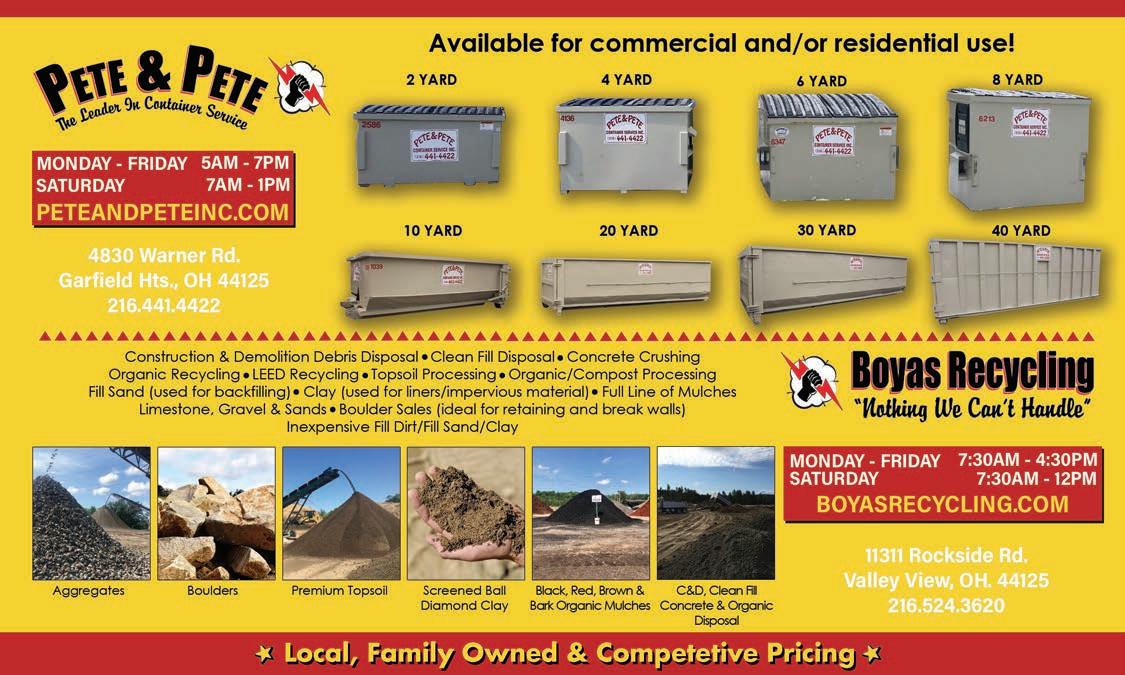
in preparing for the meeting and that you are genuinely excited about their project. Thoughtfulness leaves a lasting impression.
While most of the customer journey is online, a physical leavebehind can still be beneficial. In fact, 83% of people are likelier to do business with a company that has given them a promotional product. Whether a sales brochure printed on high-quality paper or a branded item, it helps create psychological ownership and an emotional response, builds your relationship, and leads to landing the sale when the time comes. It’s also a great visual reminder to keep your business top-of-mind after you leave.
After the on-site consultation, follow up with a personalized email that summarizes what you discussed and provides the next steps. This professional gesture reaffirms your commitment and provides them with a written record of the discussion. This is a great opportunity to include links to your relevant website content, portfolio, or other online resources that may help inspire their project, demonstrating your investment beyond your immediate involvement.
This article was written by The Content Team at Halstead Media, and OLA member service provider. Discover the marketing system that hardworking lawn, landscape, and outdoor living professionals trust their business with. Visit them on the web at HalsteadMedia.com.

Membership renewal was due on November 1. If you haven’t already renewed, we hope we have earned your support! Our three pillars are Educate, Advocate, & Elevate. We pride ourselves on serving our members! Without you, we cannot do all the things we do! Let us know how we can help you and your company – we are always interested in your input! Our membership year runs November 1 to October 31.
At the end of October, ballots were sent out via email to the individual we have on record as being the main contact of our member companies and to our educator members. Please be sure to vote for the OLA’s 2025 Board of Directors. The results of the election will be announced at our Annual Meeting.
Speaking of the Annual Business Meeting, it will be held on November 20 at St. Michael’s Woodside in Broadview Heights. As mentioned above, we will announce the 2025 Board of Directors at this meeting. Additionally, we will be announcing new members in attendance, as well as providing membership awards for milestone years of members. We celebrate each 5 year increment of your membership!
We will be holding a panel discussion that evening titled, “Transition/Succession Planning: Planning for Your Future.” This topic is not just for those ready to sell or retire. Whenever you start a business, you need to make plans for the “what ifs.” Set your business up for success by planning for the future now! Your reservation is needed by November 13 to attend.
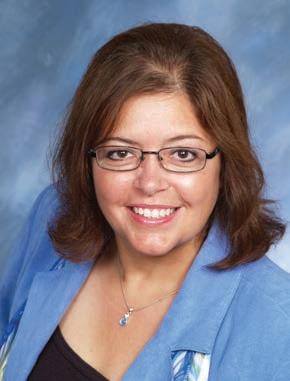
SANDY MUNLEY Executive Director / OLA
Don’t forget to start working on your entries for the 2024 Landscape Ohio! Awards Program. You can find all the entry information on our website ohiolandscapers.org/awardsprogram. With 18 different categories to choose from, including maintenance, there is a category for everyone! The award winners will be celebrated at our Awards Gala on Friday, June 6, 2025 at Windows on the River in the Flats of Cleveland. The evening starts with cocktails, includes dinner, an Academy Awards-style presentation, and ends with a fun afterparty! The entry deadline is December 13 and all entries must be in the OLA Office by 5pm.
I encourage you to join a committee. Our committees provide a great opportunity to connect with your peers and gives you the opportunity to not only influence the direction of the OLA, but also foster relationships that can lead to new opportunities and partnerships for your company and professional growth.
We will be holding an introductory meeting for all committees on February 19, in person at Woodside at 3 pm, right before the February evening meeting. You will need to RSVP in advance, because dinner is included. Let Rick or me know if you are interested!
As always, I look forward to seeing you soon!
The OLA welcomes the
REGULAR MEMBERS
A&M General Services
17801 W 130th St. North Royalton, OH 44133 (440) 628-9501
Michael Morgan
A Cut Above Lawn & Landscape Services, LLC 34194 Aurora Rd #163 Solon, OH 44139 (855) 647-5296
Donald Cornelius
Anders Lawn & Landscape 408 S 22nd St Heath, OH 43056 (740) 915-8454
Cole Anders
Divis Landscape & Design 36062 Harbor Dr. North Ridgeville, OH 44039 (440) 382-2616
Chris Divis
Linnabary Landscaping LLC 6969 Worthington Galena Rd. Worthington, OH 43085 (614) 899-6500
Jody Linnabary
ASSOCIATE MEMBERS
Ag Pro of North Canton 7233 Sunset Strip Ave. NW North Canton, OH 44720 (330) 830-1275
Josh Knapik
Eason Horticultural Resources Inc. 939 Helen Ruth Dr. Fort Wright, KY 41017 (859) 578-3535
Wendy Moore
Company Wrench 4805 Scooby Ln Carroll, OH 43112 (740) 654-5304
Tim Isaac
Iron Man Supply LLC PO Box 227 Newbury, OH 44065 (440) 564-9888
Jeff Bonato
Ricart To Business 4241 Williams Rd Groveport, OH 43125 (614) 328-5540
Dan Bryan
STUDENT MEMBERS
Cuyahoga Community College
Alexandria Cerny
Brandon Rudd
Christine Kermond
Hannah Derrickson
Kiira Olszko
Ohio State ATI
Aaron Baker
William Belew
The Ohio State University
Gavin Koval




